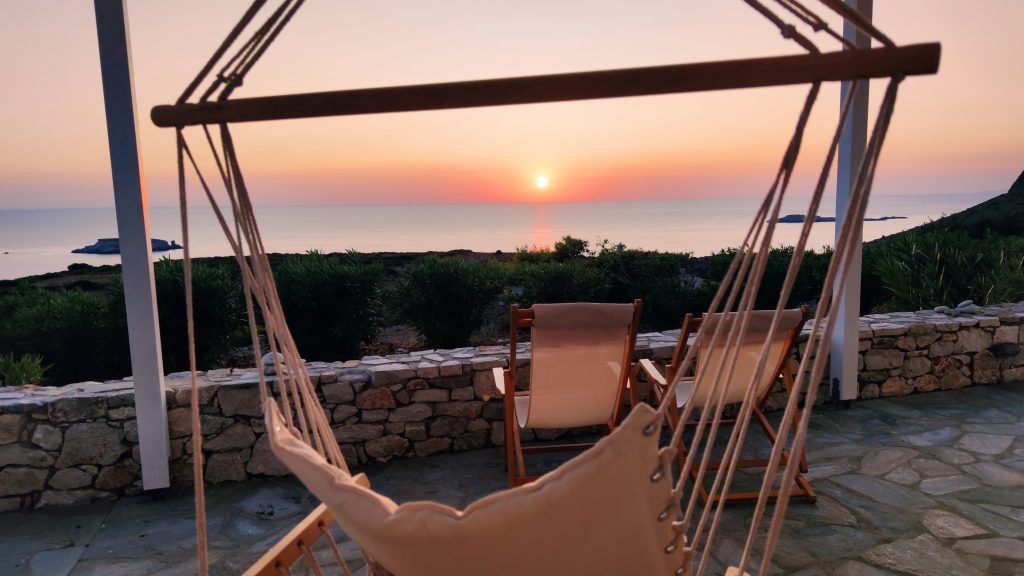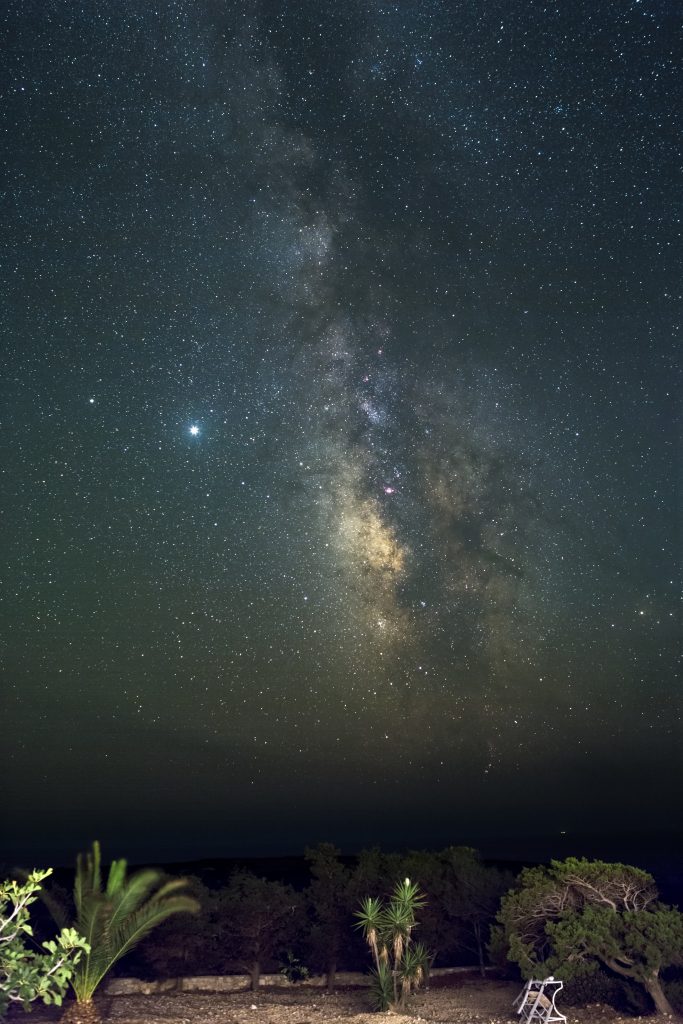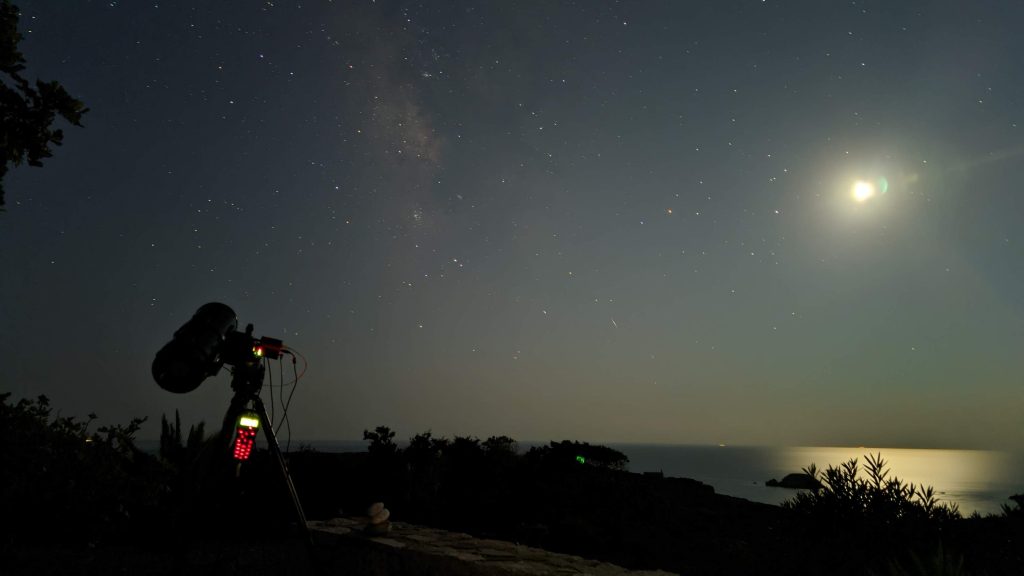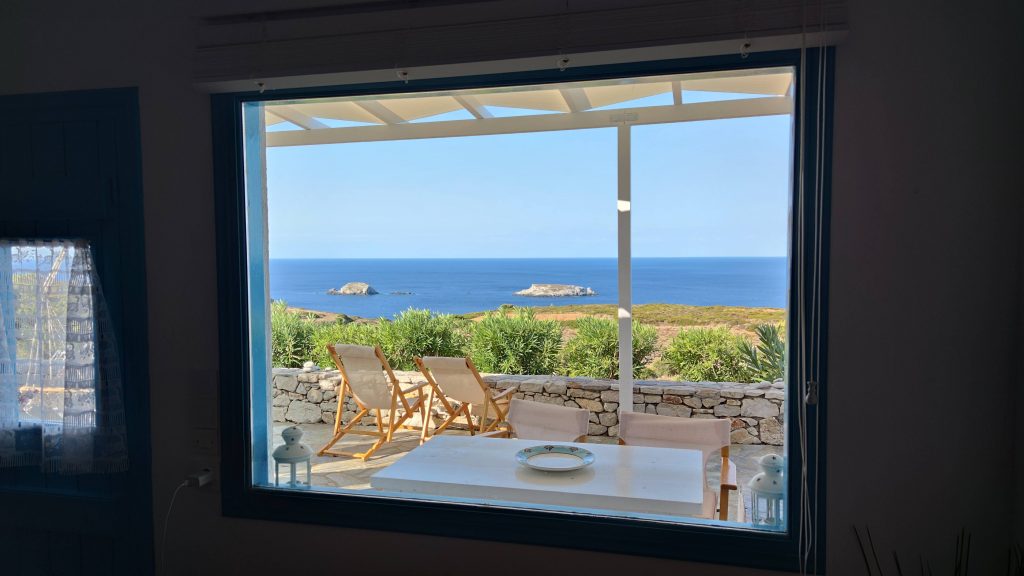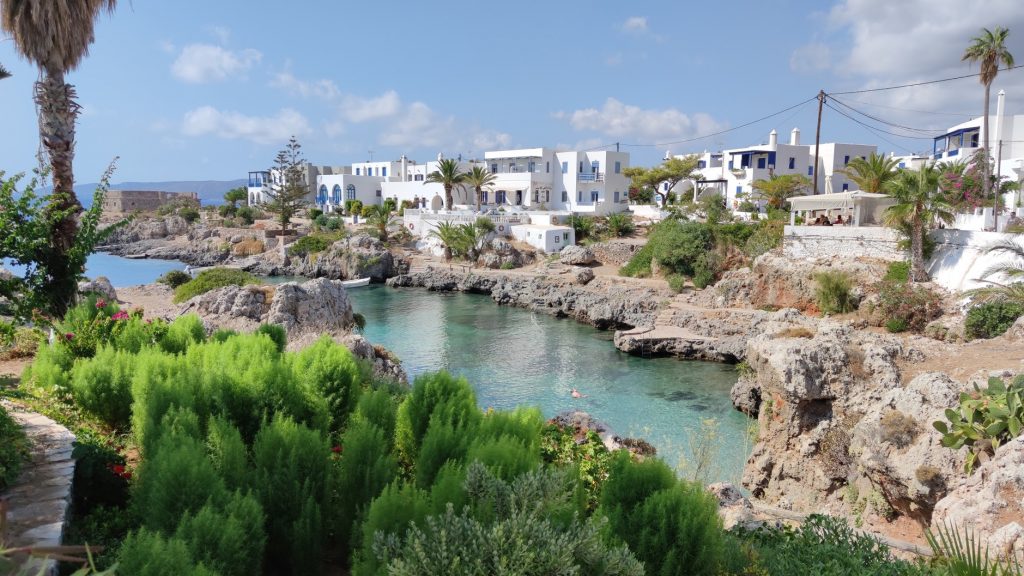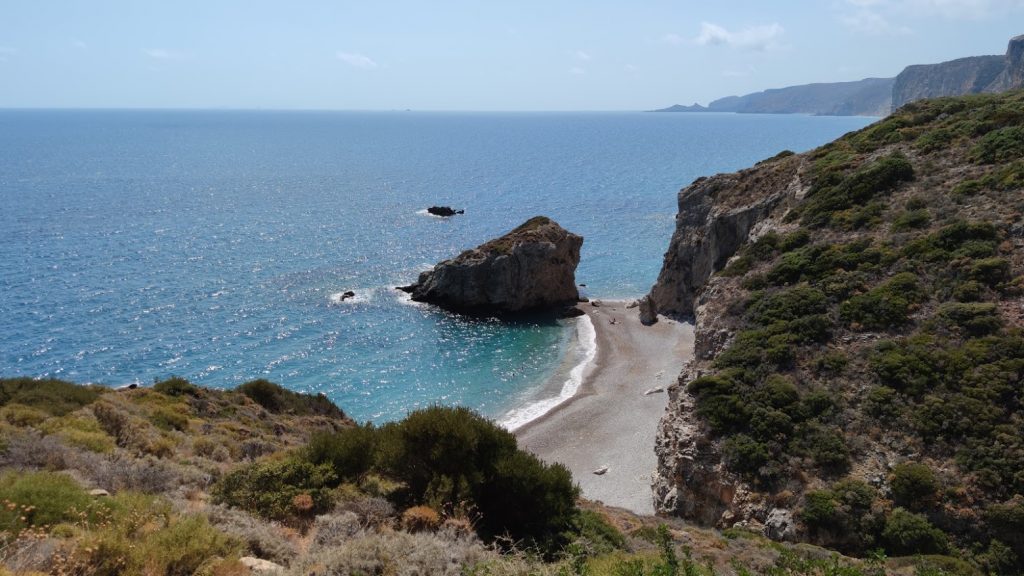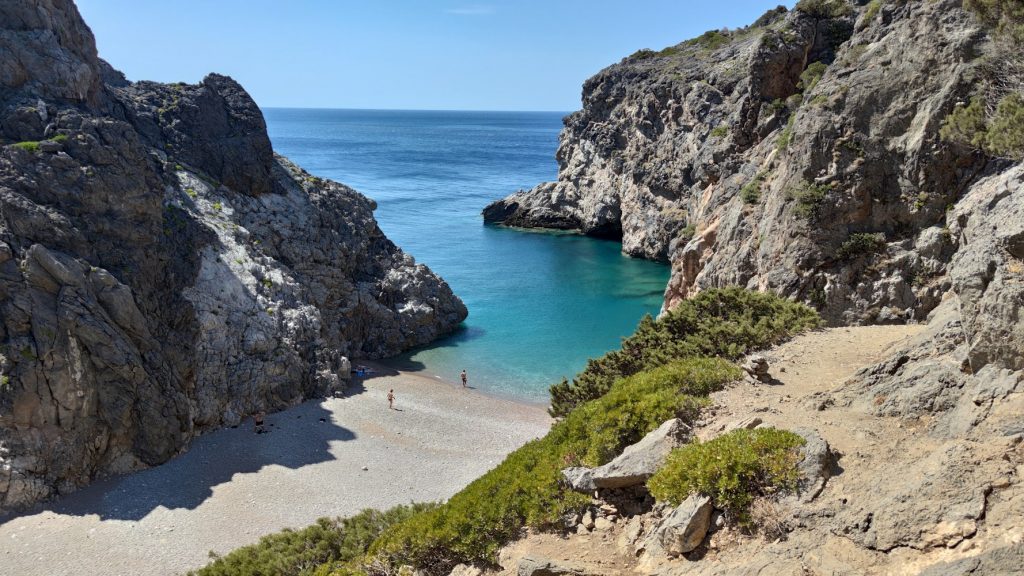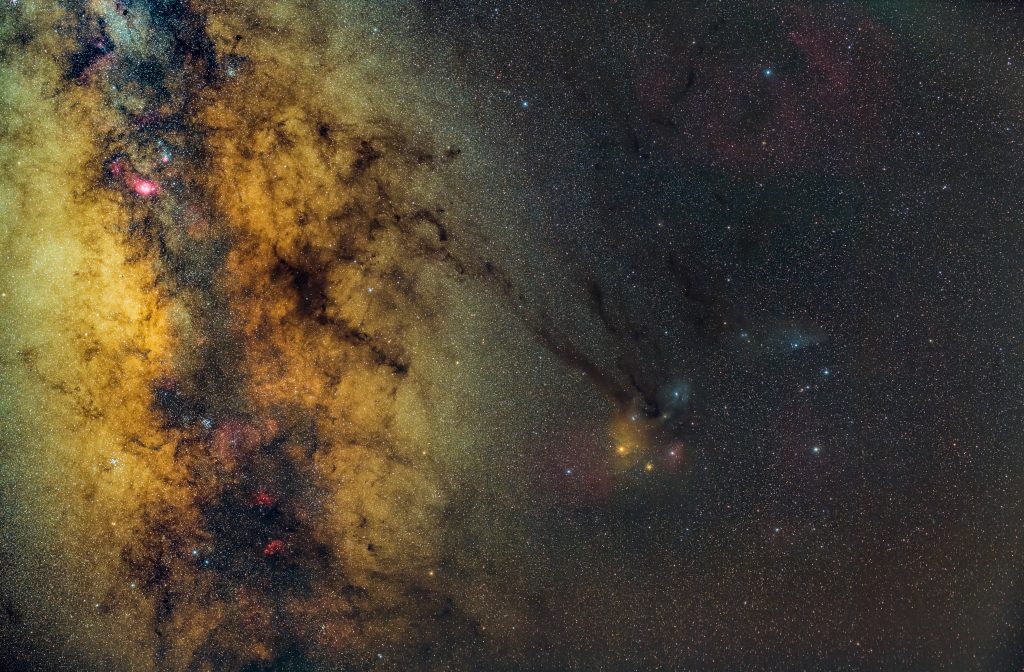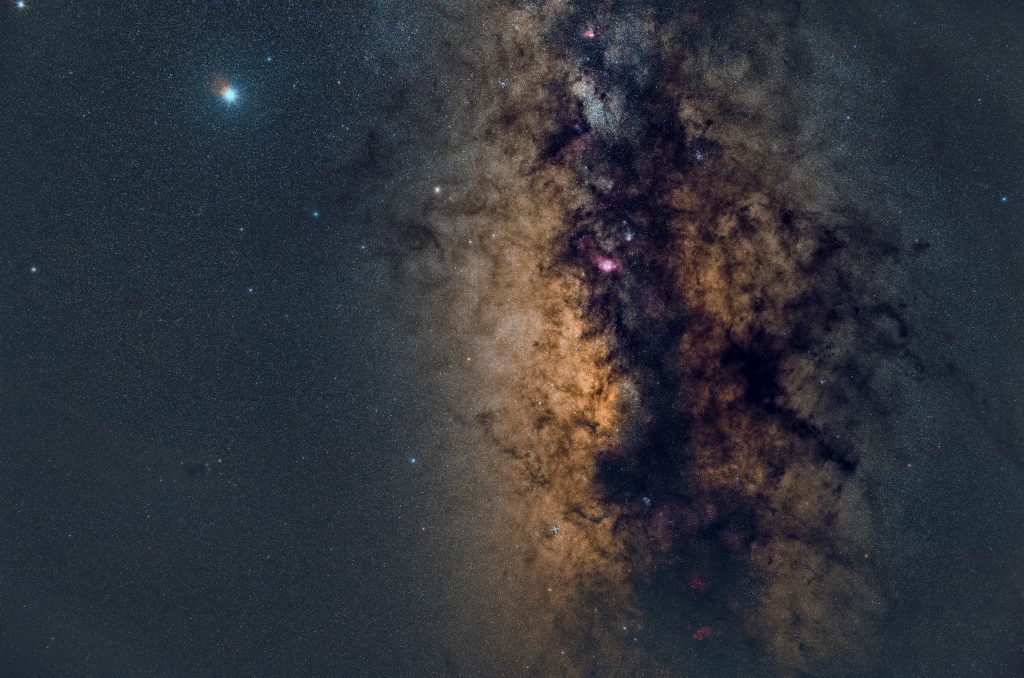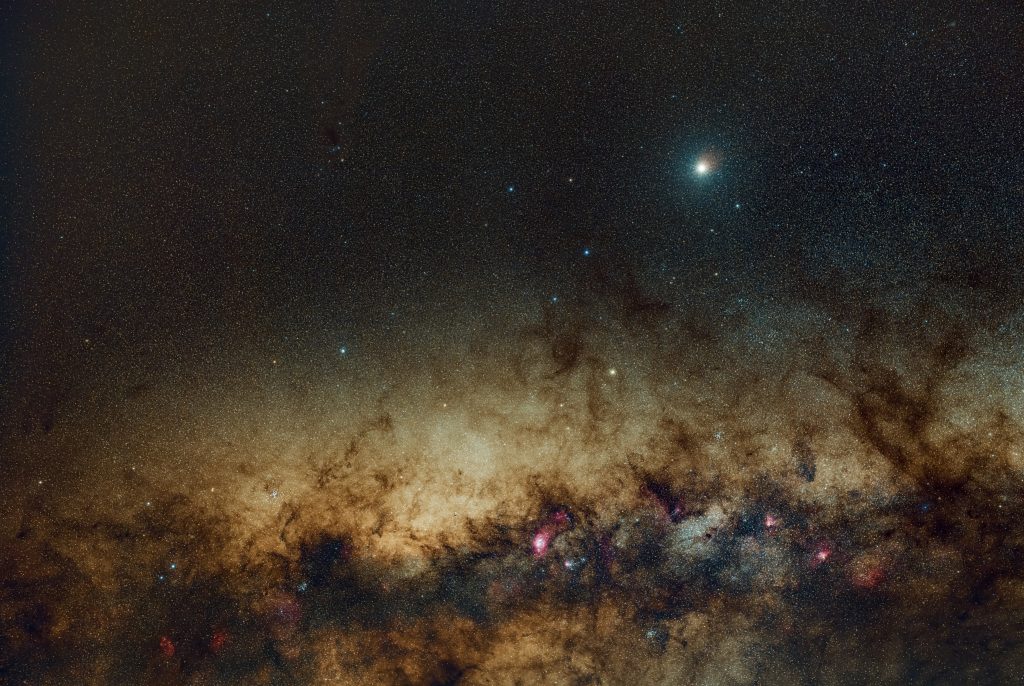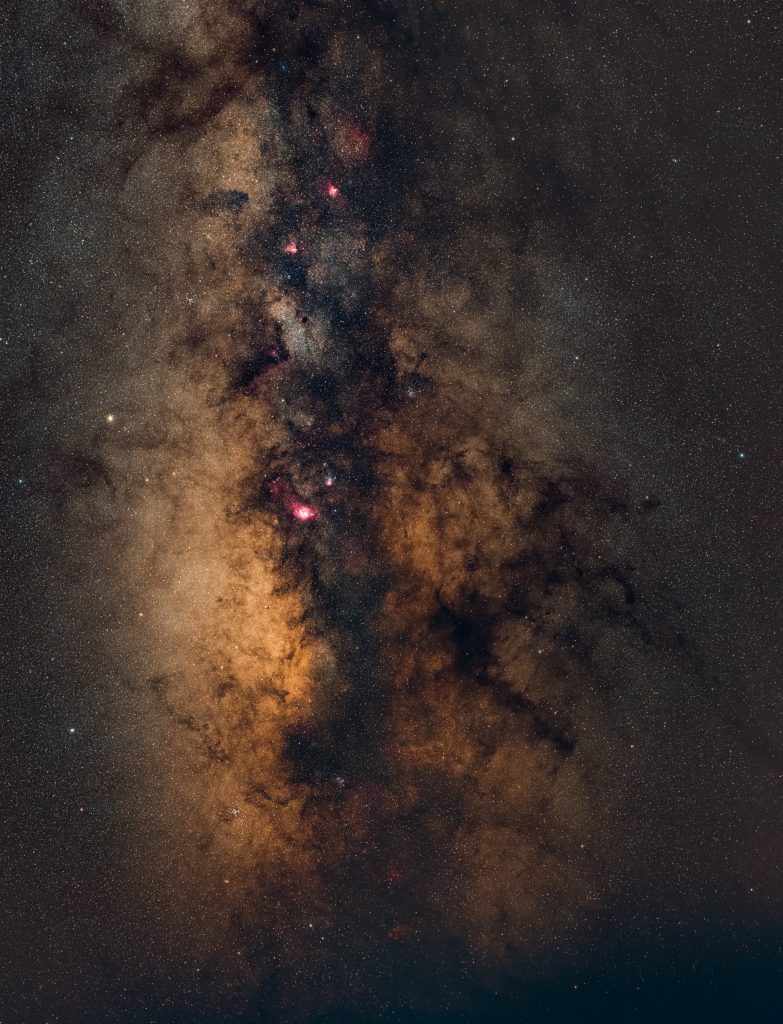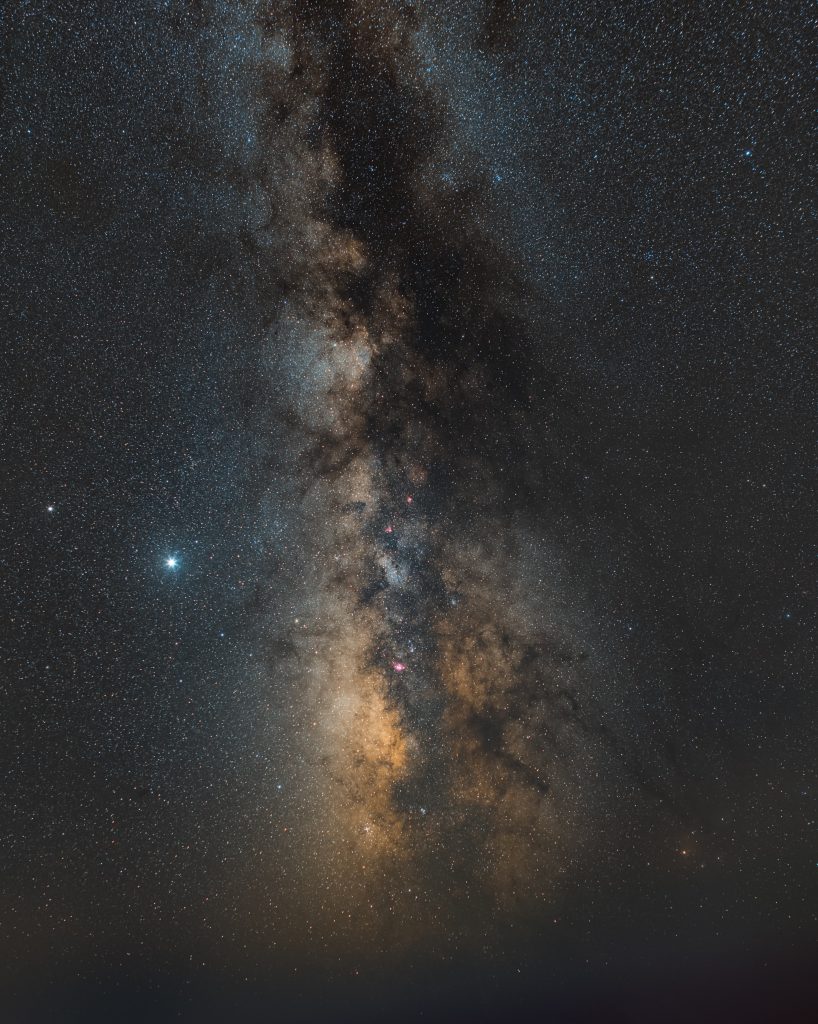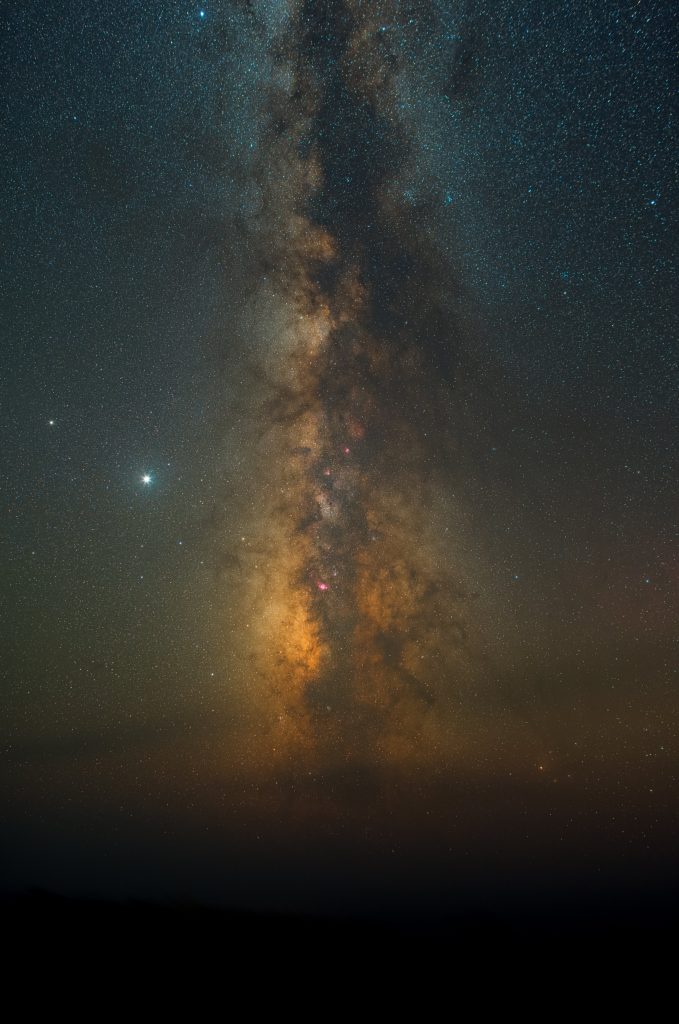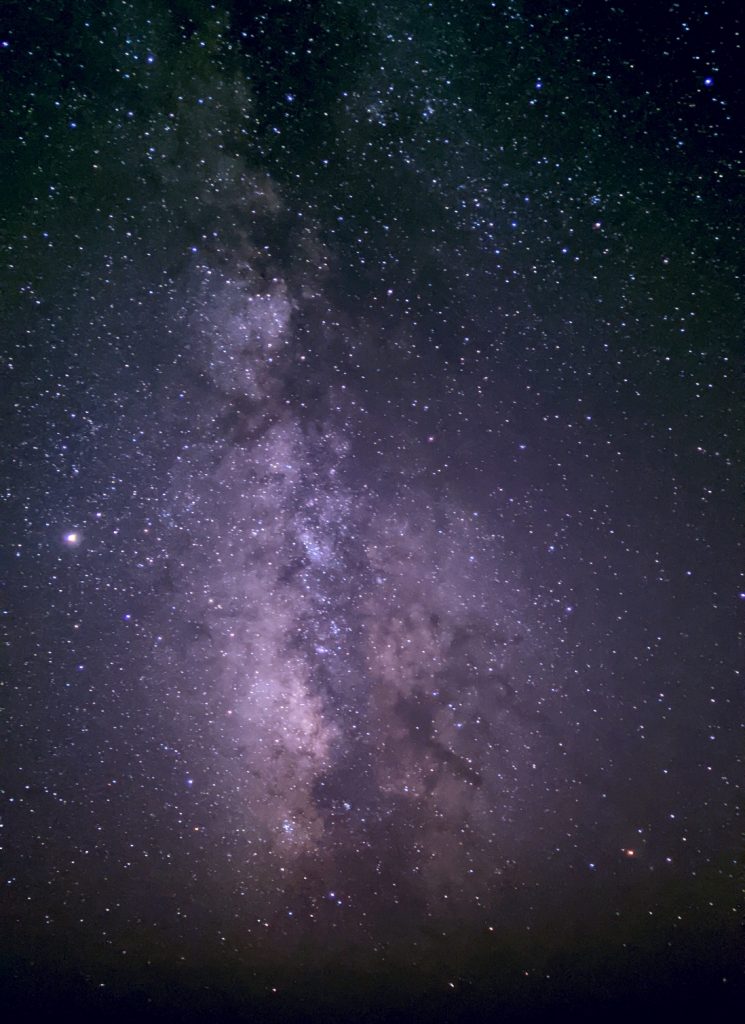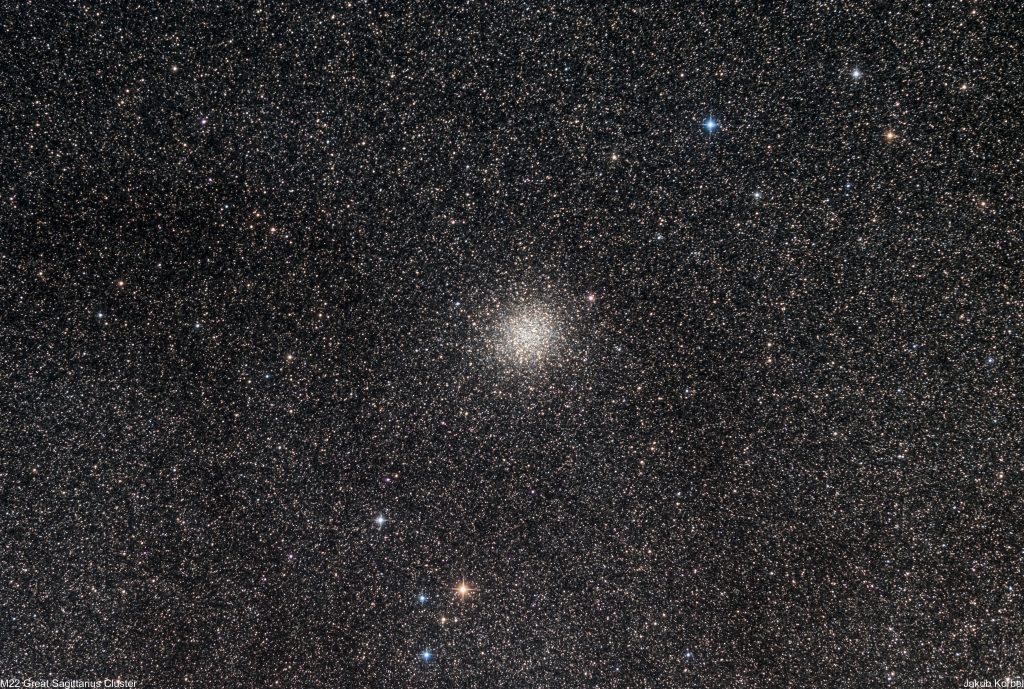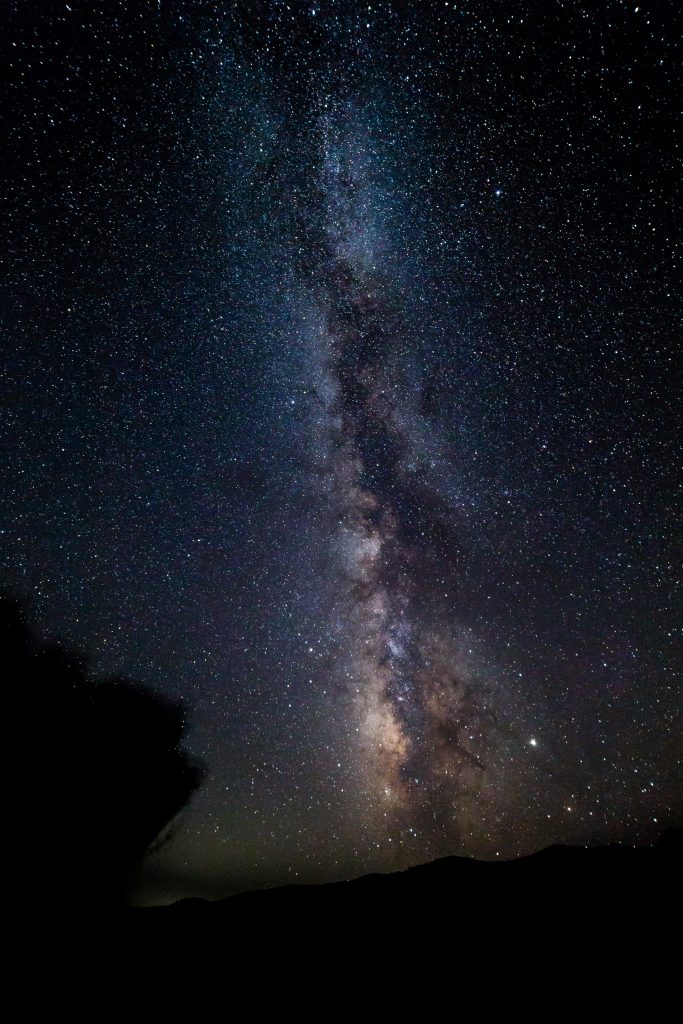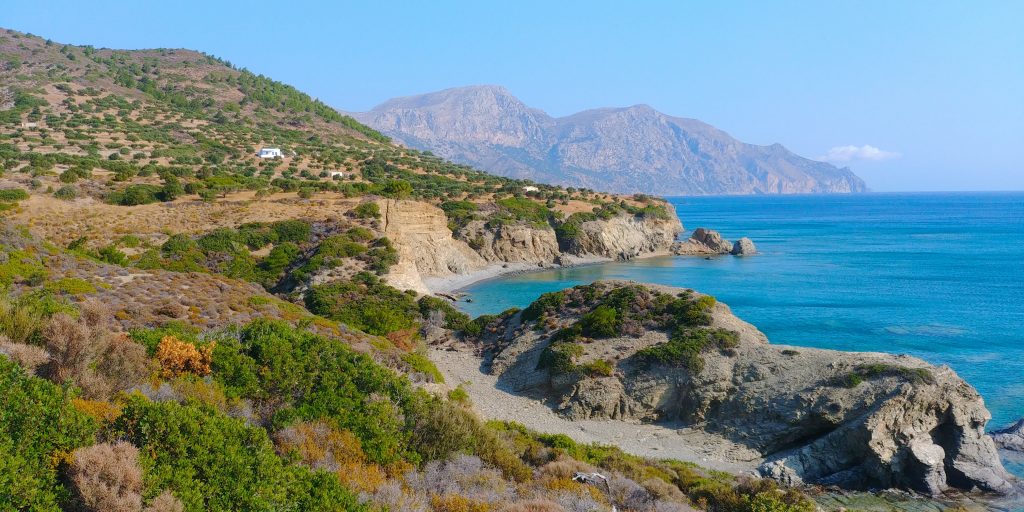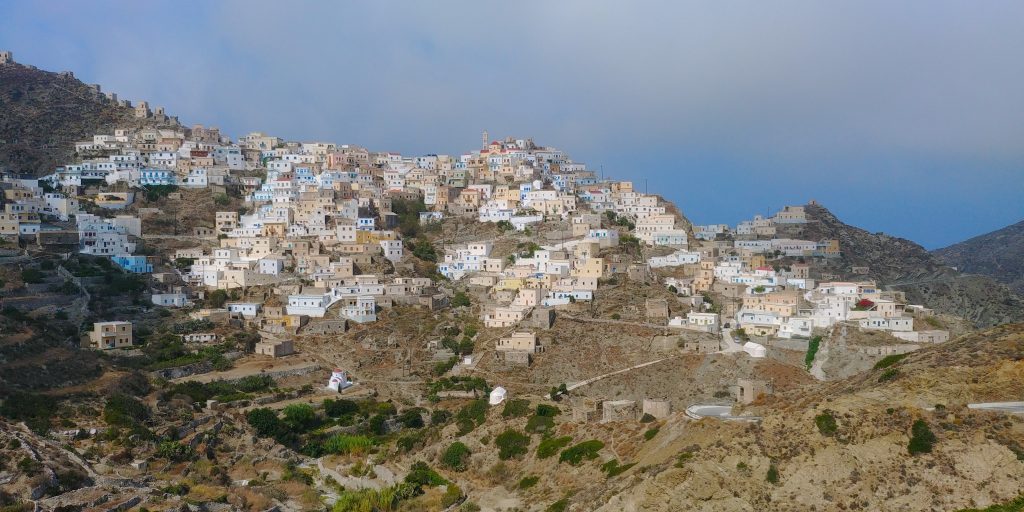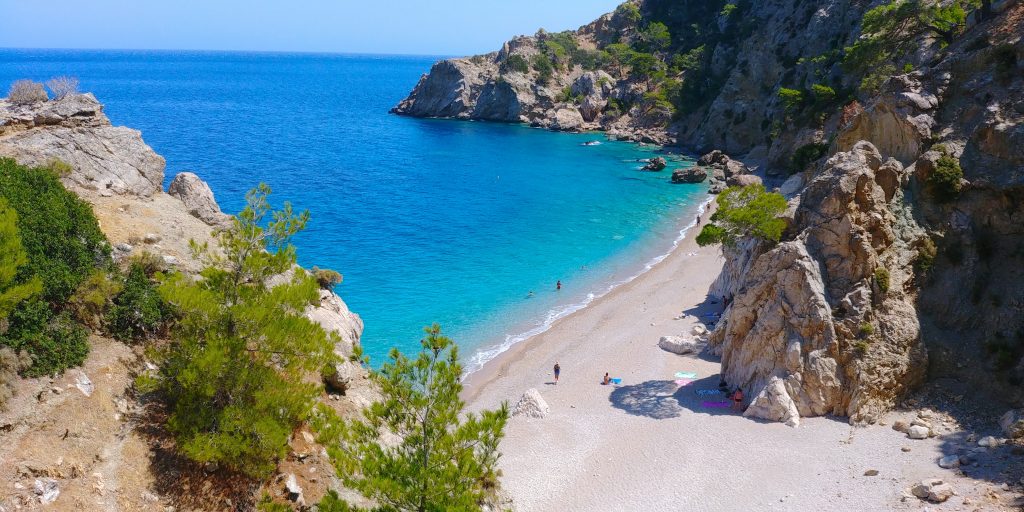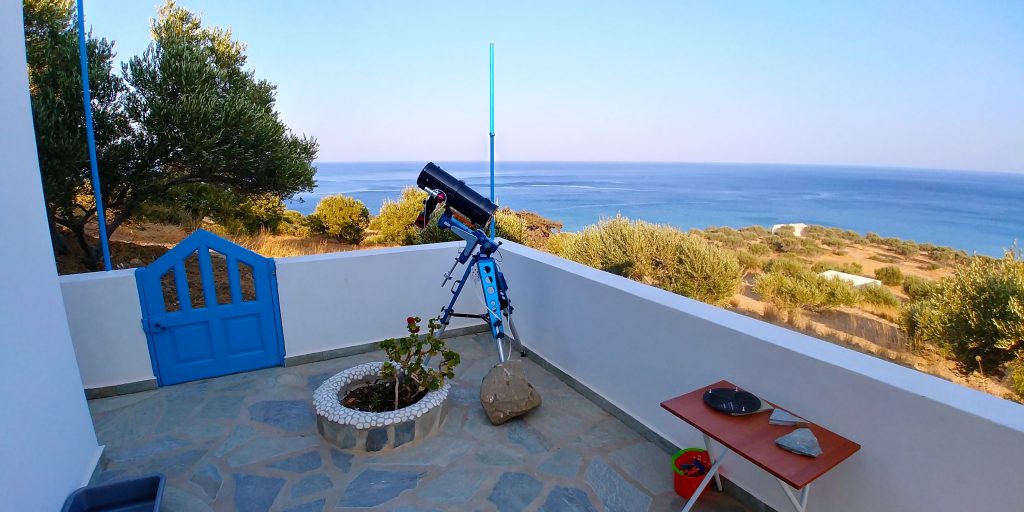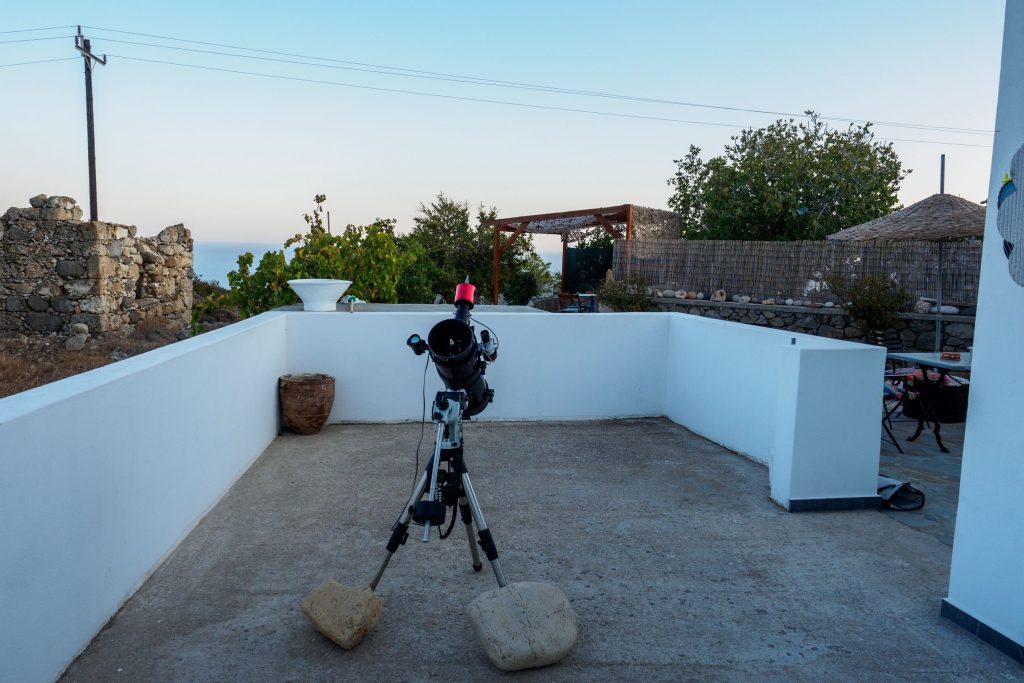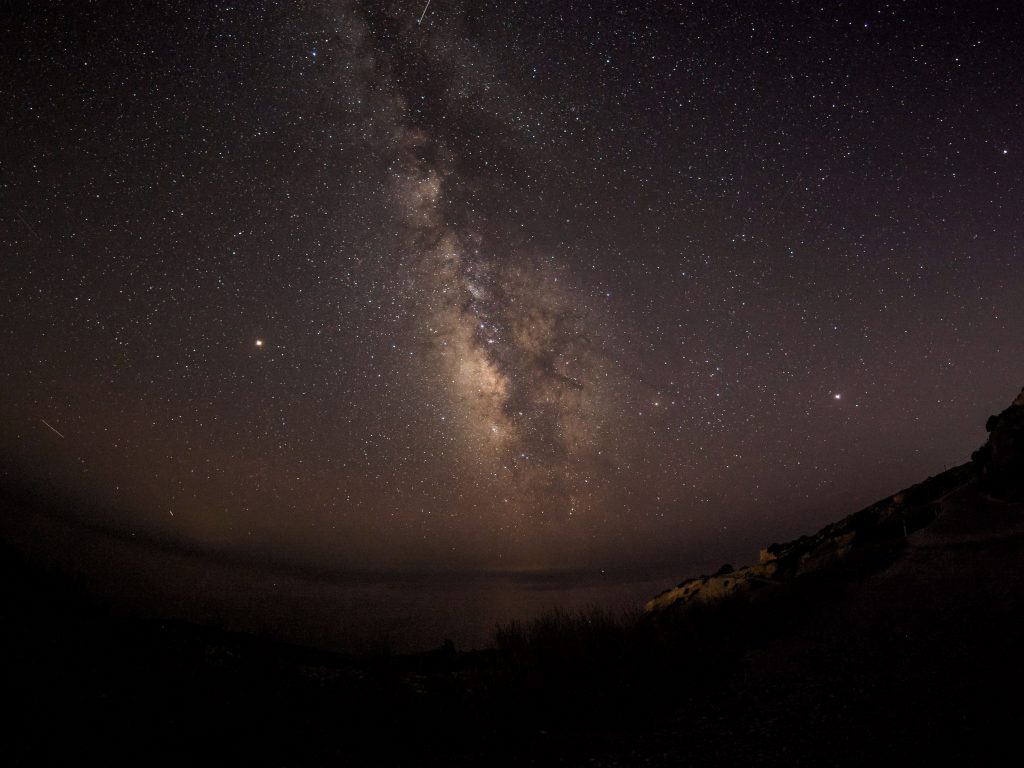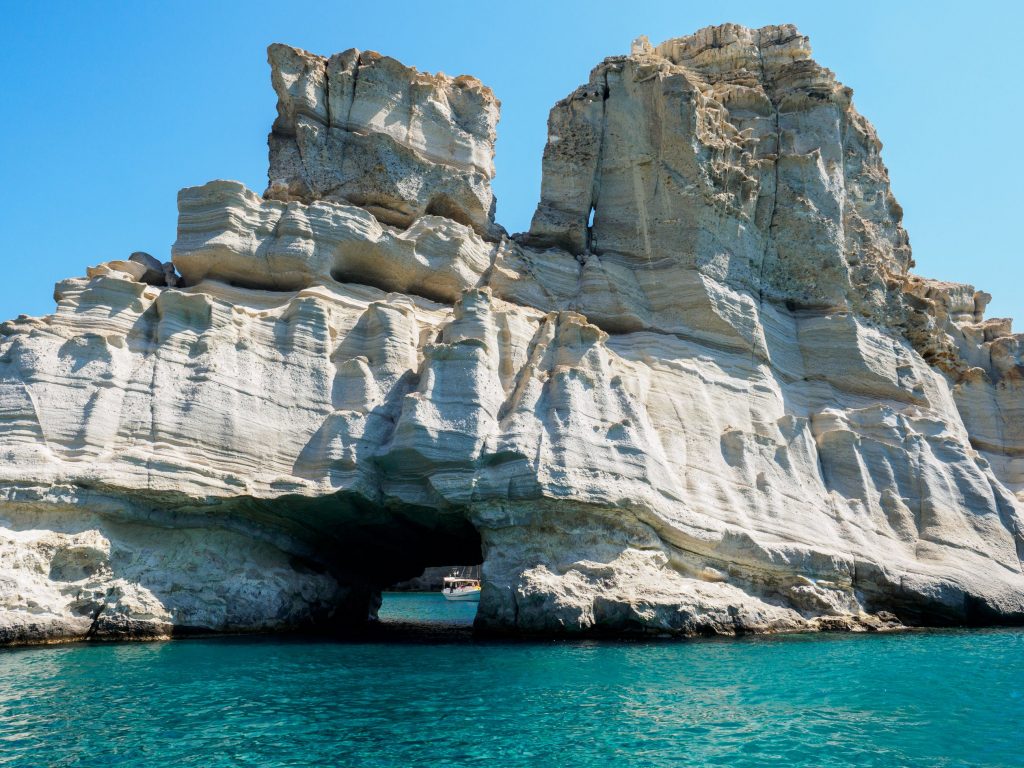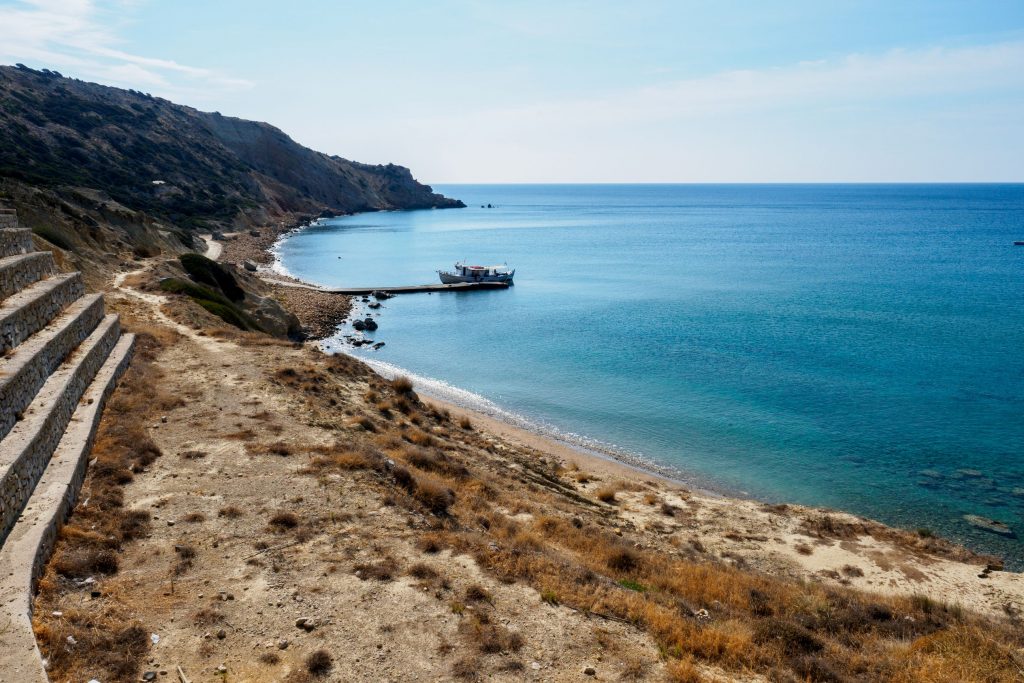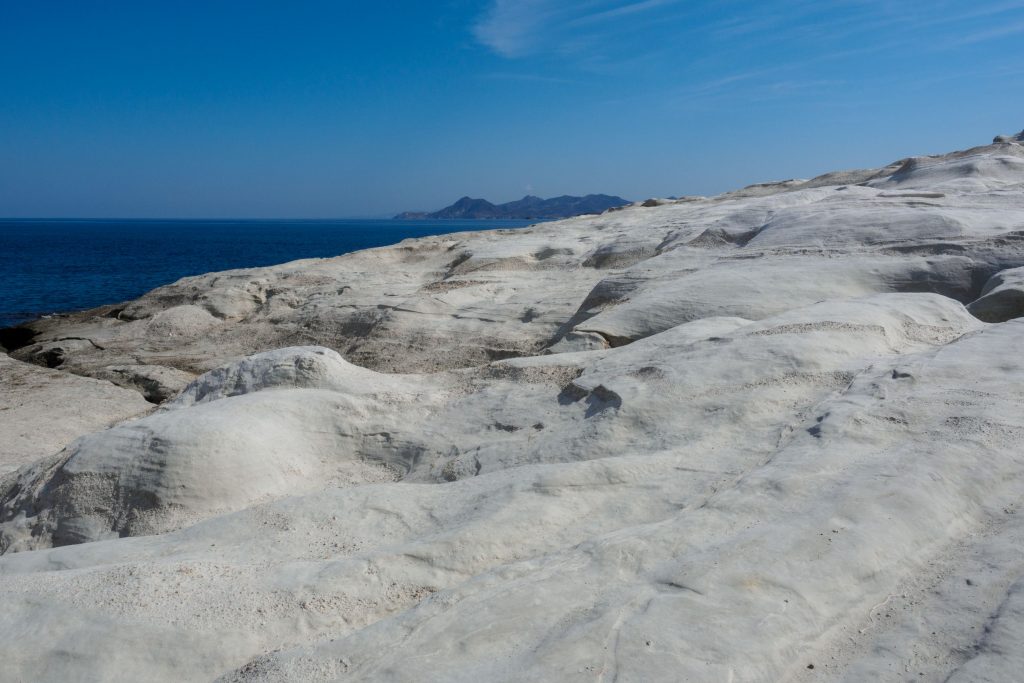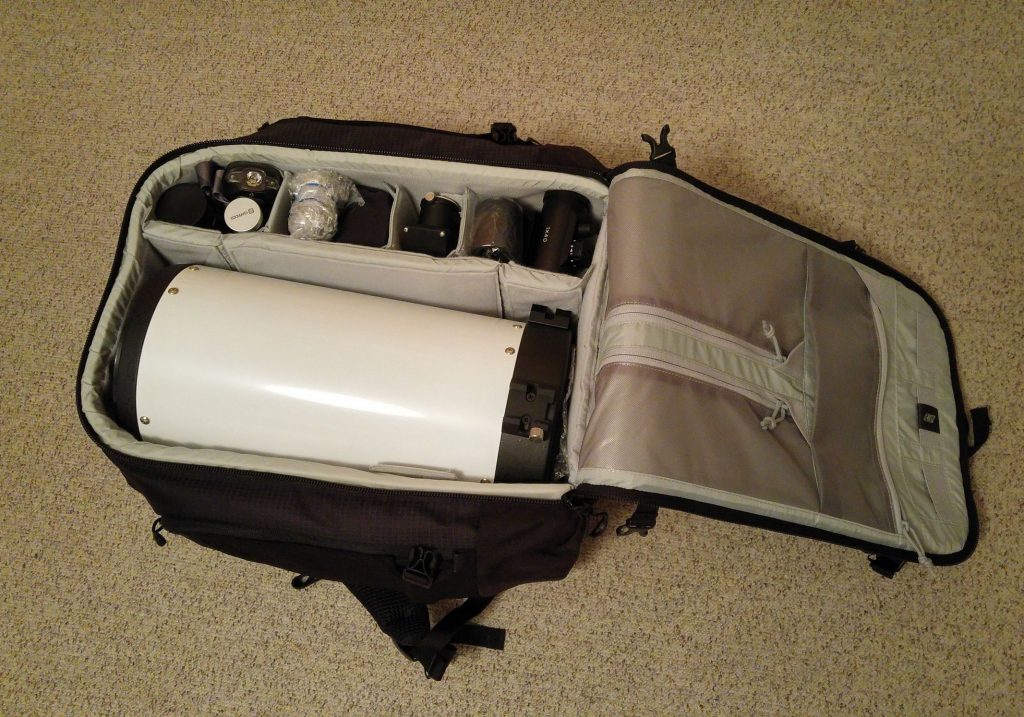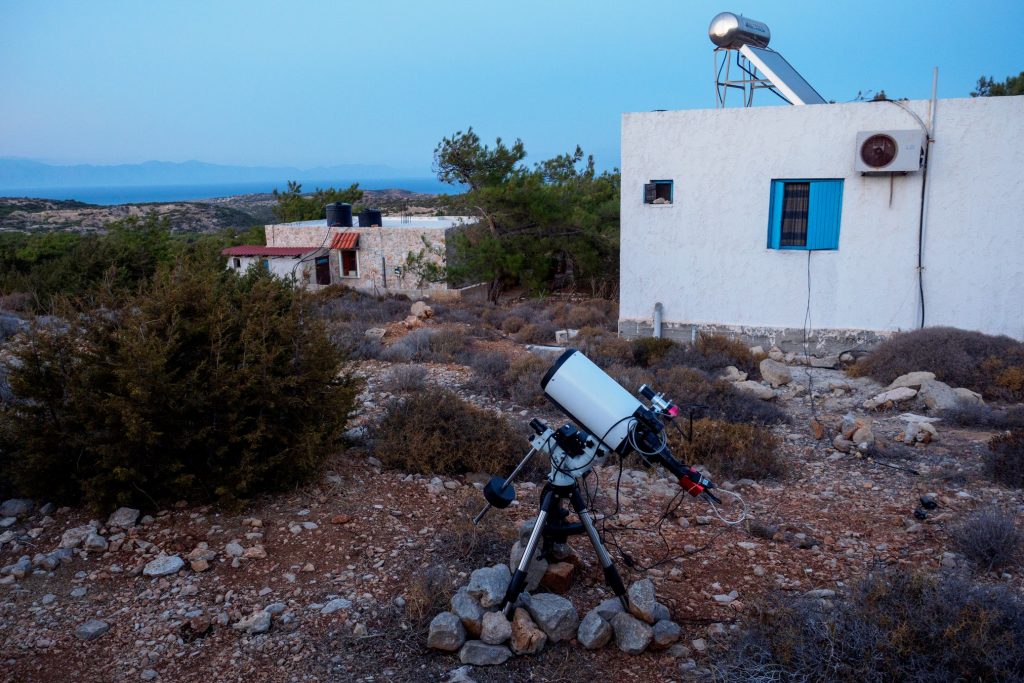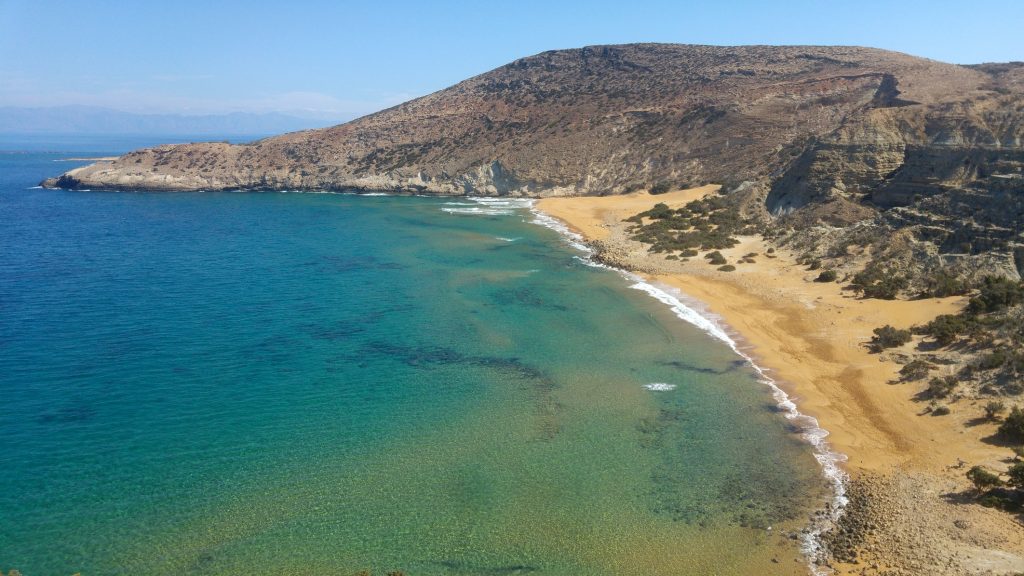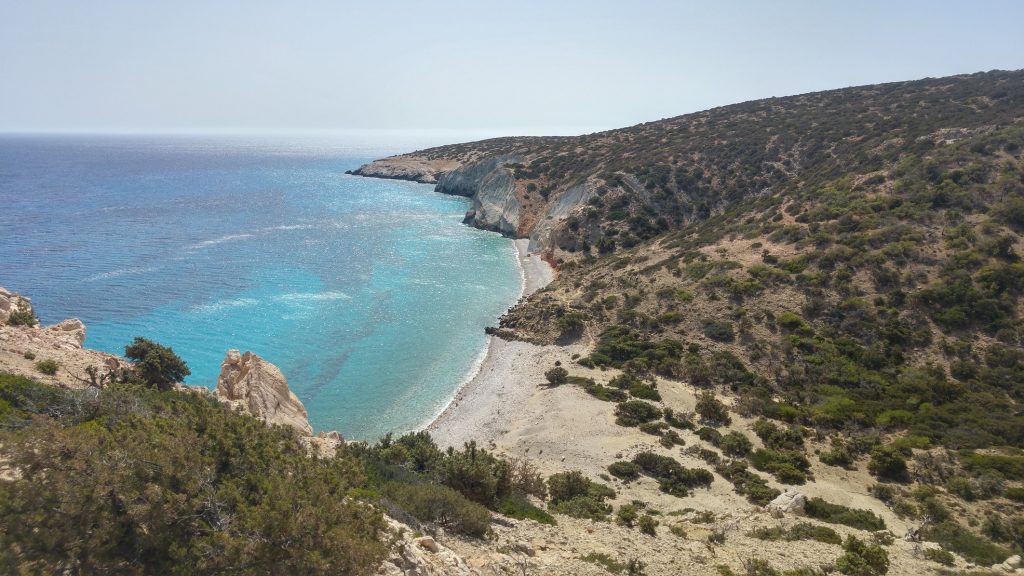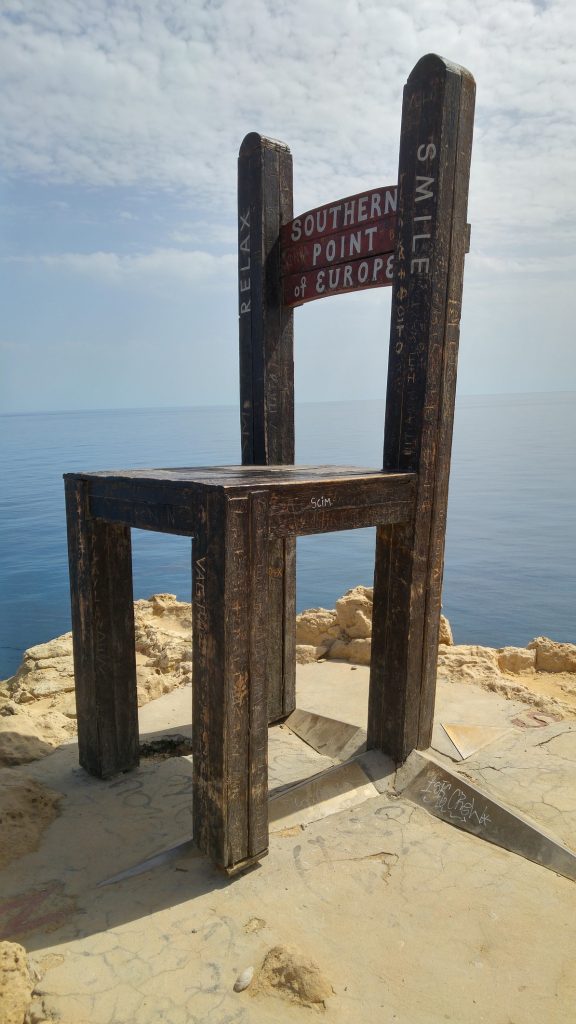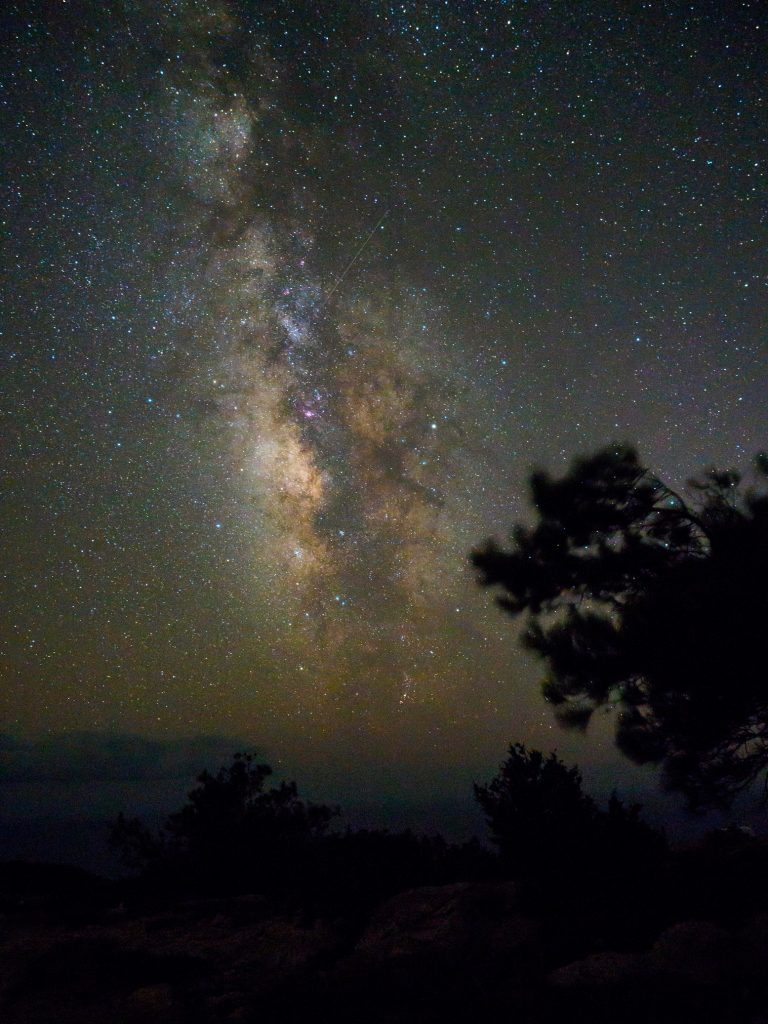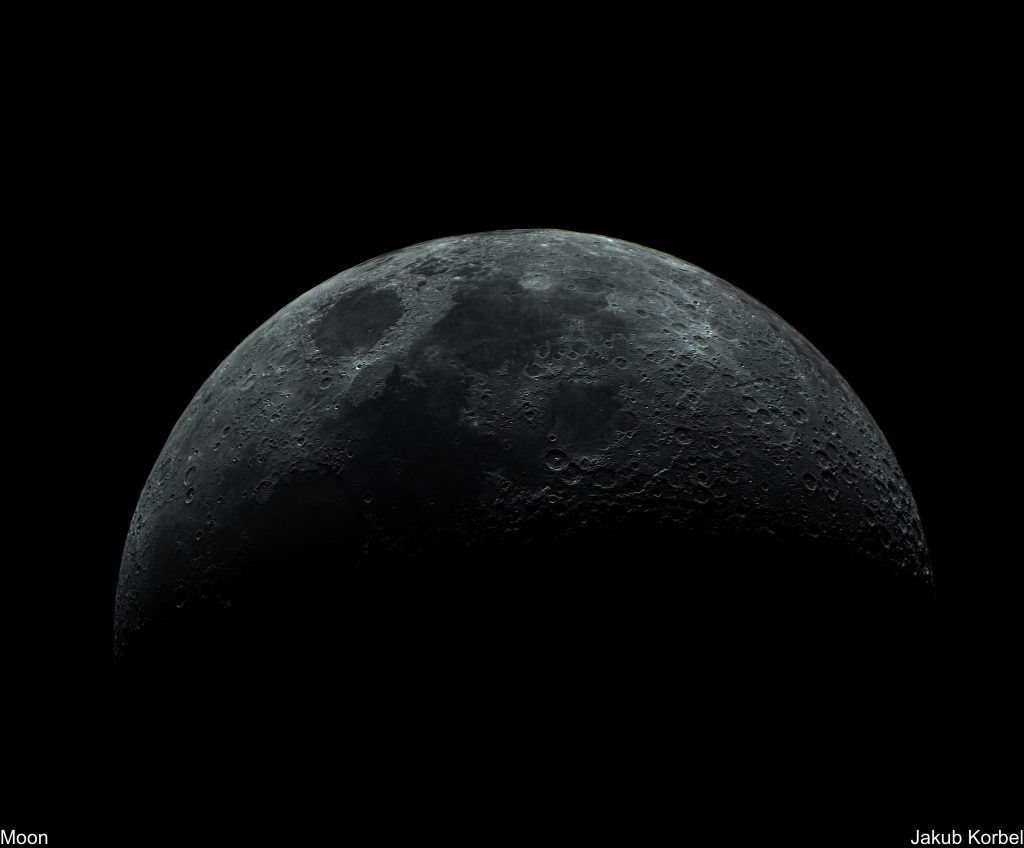This year we made our traditional summer vacation in Greece a bit earlier. The main reason was the cheap plane tickets to Crete. The destination was given, what remained was to specify the precise location. My friends recommended the southeast coast, so I started to search and found a house with a suitable terrace in the abandoned village Chametoulo. According to the light pollution map, the location should be perfect. We arrived at night, parked in front of the village, and moved all our stuff to the house through very narrow, steep streets. The first thing, that struck my eyes, was the presence of several LED powerful street lamps. WHY? Why there are street lamps in the empty village? Who pays for the electricity? Anyway, the terrace was partially covered and protected from the street lamps. On the other hand, it was very dark anywhere you look. I measured the SQM and directly at the zenith reached 21.55, which is a very good value. I started to get excited, but during our stay, my excitement was turned into frustration. It was very windy all the time. Some days it was less windy, but still, the conditions were far from being optimal. Fortunately, I took two rigs with me. The classical 150/600 mm Newtonian, sitting on RST 135 mount. The second one I tried in the winter – the pocket astrophotography rig. Askar F4.5 180 mm refractor, coupled with Canon 6D astro-modified and all this on extremely portable iOptron SkyGuider Pro. The Newtonian was totally unusable in the wind, but tiny Askar had no problems at all and I took roughly 1300 photos with Canon 6D camera.
Here is village Chametoulo during the day:
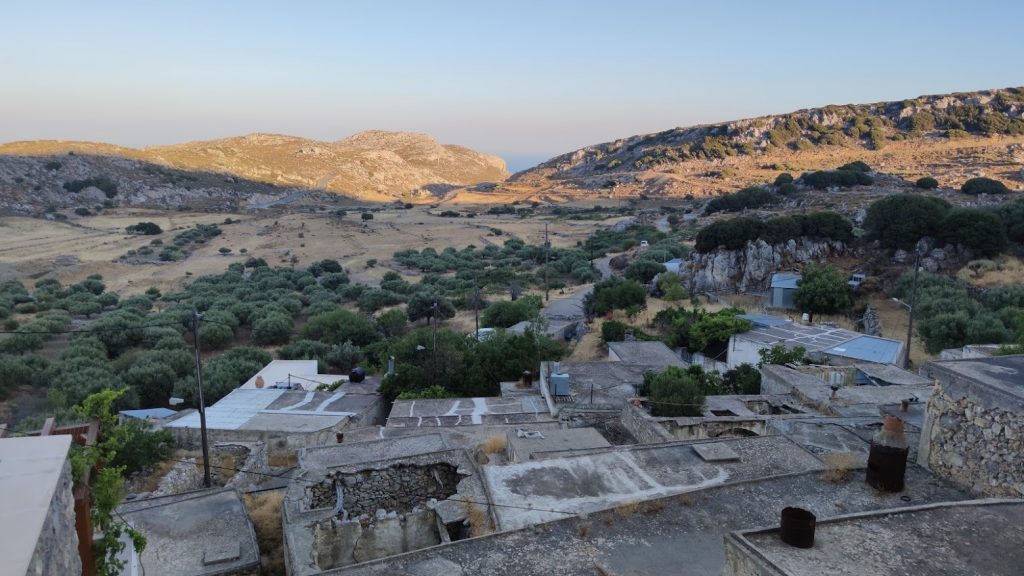
And here is the village Chametoulo during the night:
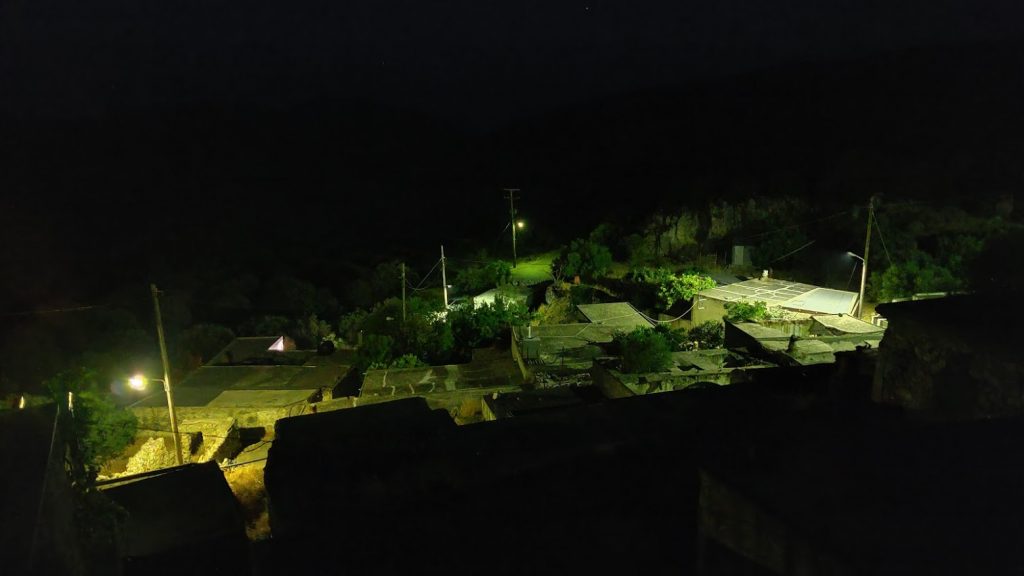
Here is the double rig. I attached a 20 l canister to the tripod holding the RST 135 and 150/600 Newtonian to minimize the vibration due to the wind, but unfortunately, it didn’t help.
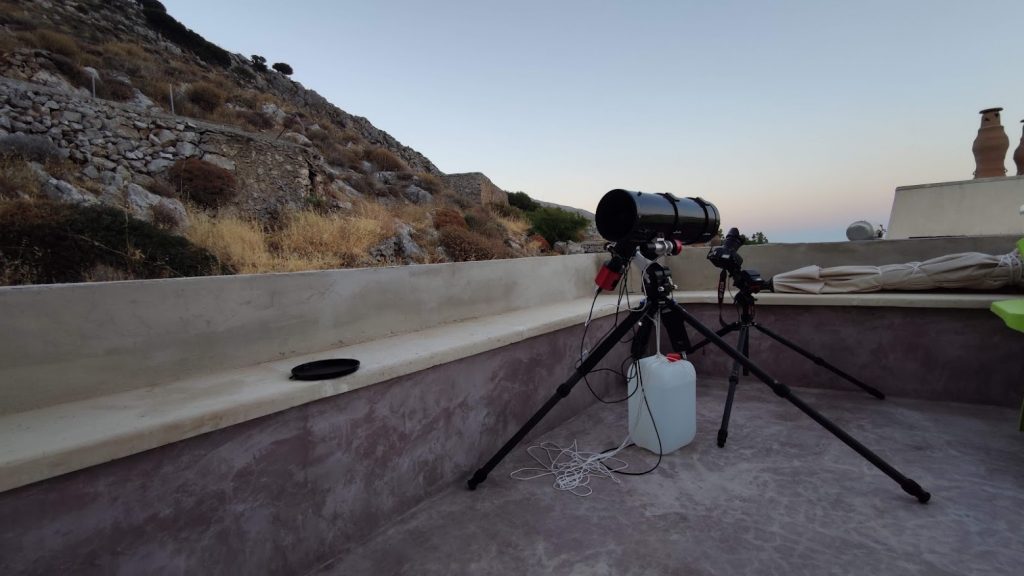
In the end, I managed to capture a couple of galaxies: M101 Pinwheel, M31 Andromeda, but otherwise, I gave up with 150/600 mm Newtonian. The smaller rig based on iOptron SkyGuider Pro performed much better. My primary target was Rho Ophiuchi @180 mm focal length. Then I captured the most interesting nebulae in constellations Serpens and Sagittarius – Lagoon, Trifid, Eagle, and Omega nebulae. Then I moved to the constellation Cygnus and captured it with many different focal lengths. Finally, I made a stop at the constellation Cassiopeia to compose the Heart, Soul nebulae with the Double Cluster NGC 869 and 884.
The Milky Way was not possible to photograph directly from the house, due to the street lamps in the village. I had to take a car and drive a bit to get to the South Coast Viewpoint:
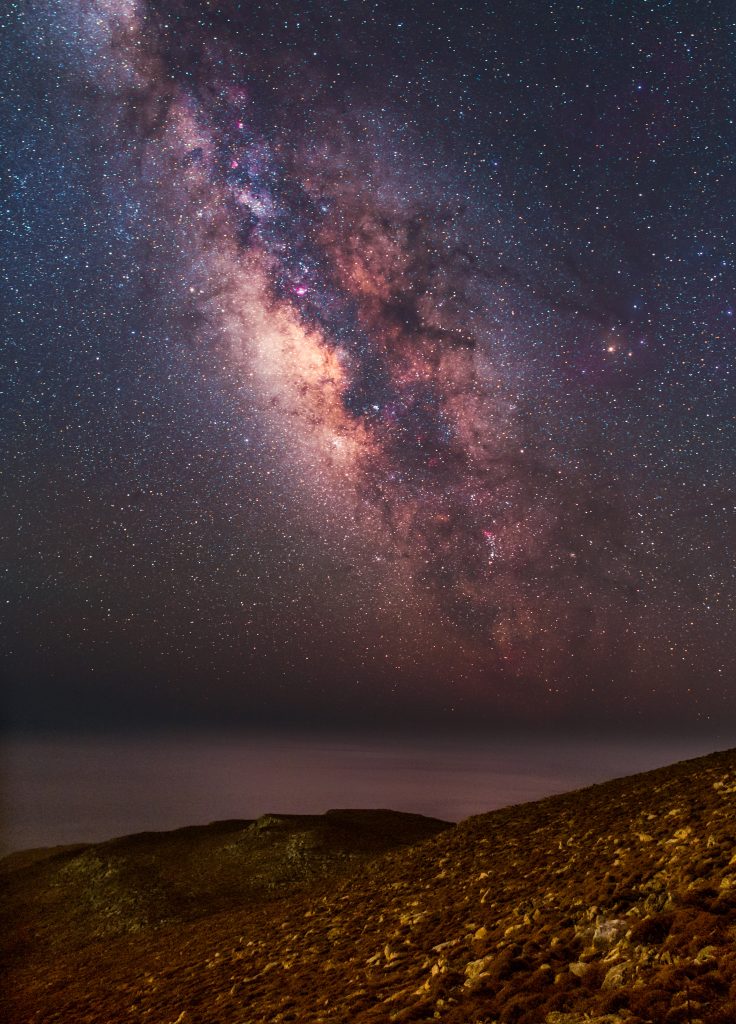
Technical details:
| Lens | Samyang 24 mm f1.4 @ f2.8 |
| Camera | Canon EOS 6Da |
| Mount | iOptron Skyguider Pro |
| Exposure | 16x15s, ISO 1600 |
| Date | 2021-07-14 |

